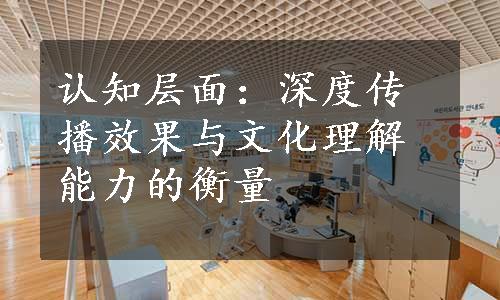
如前所述,认知层面是对事物表象的初步认识,属于浅层传播效果,仅仅形成于受众的感觉和知觉层面,衡量尺度通常用受众对传播内容的“知晓度”来表示。[12]相应地,茶文化典籍翻译的浅层次传播效果就是指译文受众是否理解译文传达的信息。这里的信息既指茶物质方面的信息,也包括茶文化精神层面的信息。
从《茶经》三个译本来看,对茶物质方面信息的翻译都是比较准确的,读者也能够理解,虽然理解各个译本所耗费的精力会有所不同。“大中华文库”译本更注重原文信息传递的准确性和完整性,但相对忽视了西方读者对茶知识的理解能力,有些信息缺少必要的解释,读者要进行全面理解比较困难。例如,在介绍茶碗时,陆羽对邢瓷和越瓷进行了比较:
或者以邢州处越州上,殊为不然。若邢瓷类银,越瓷类玉,邢不如越一也;若邢瓷类雪,则越瓷类冰,邢不如越二也;邢瓷白而茶色丹,越瓷青而茶色绿,邢不如越三也。……越州瓷、岳瓷皆青,青则益茶。茶作红白之色,邢州瓷白,茶色红……(四之器,p.115)
“大中华文库”译本:
Some people assume that tea bowls from Xingzhou in Hebei are even better than those from Yuezhou.Actually this is not the case.If the Xing porcelain can be compared to valuable silver,then the Yue porcelain matches invaluable jade.This constitutes the first disparity.If the Xing porcelain is described as snowy white,then the Yue porcelain can be said as icy crystal.This makes the second gap.What's more,tea soup looks reddish in the bowl of white Xing porcelain,while the soup shines like emerald in the bowl of jade Yue porcelain....
Chinawares from both Yuezhou in Zhejiang,and Yuezhou in Hunan bear cyan glaze,lending the tea soup a rosy and milky tint.
In contrast,snow white bowls from Xingzhou kilns will set off the tea soup a reddish hue.[13]
在对刑瓷和越瓷进行比较时,陆羽从三个方面进行比较:一是“邢瓷类银,越瓷类玉”,银和玉具有不同的价值,读者应该能够明白意思。二是“邢瓷类雪,则越瓷类冰”,对于这一点读者就未必明白为什么冰优于雪。在中国文化中,我们听到“冰”会联想到“冰清玉洁”,但在西方文化中,“ice”似乎并没有特别的联想。此外,这两个比喻都是一种主观的观点,陆羽并没有对为什么“邢瓷类银,越瓷类玉”“邢瓷类雪,则越瓷类冰”进行论证,翻译时若是不加解释,很可能给西方读者带来困惑。而第三个方面“邢瓷白而茶色丹,越瓷青而茶色绿”则是客观描述,显得更有说服力。然而,陆羽对这句话的描述非常简单,因为与他同时代的读者具有和他一样的饮茶知识背景,知道什么样的茶会在邢瓷和越瓷中呈现不同的颜色,邢瓷和越瓷哪个更好就自然清楚了。然而,西方读者未必知道陆羽时代的饮茶习惯,在西方,比如英国,人们普遍喝的是红茶,红茶的颜色本来就是红色的,读者会觉得在白瓷中呈现红色是很正常的,呈现绿色反而不正常。因此,在这个地方,若是按原文字面意思翻译而不加解释,读者很可能会感到困惑。关于这里对读者可能造成的理解困难,卡朋特译本和《国际茶亭》译本在翻译时稍做了改动,降低了理解难度。
卡朋特译本:
There are those who argue that the bowls of Hsing Chou are superior to Yüeh ware.That is not at all the case.It is proper to say that if Hsing ware is silver,then Yüeh ware is jade.Or if the bowls of Hsing Chou are snow,then those of Yüeh are ice.Hsing ware,being white,gives a cinnabar cast to the tea.Yüeh ware,having a greenish hue,enhances the true color of the tea.That is yet a third way to describe Yüeh Chou's superiority to Hsing Chou in the way of tea bowls....
...
Stoneware from both the Yüeh Chous is of a blue-green shade.Being so it intensifies and emphasizes the color of the tea.If the tea is of a light red color,it will appear as red in the white bowls of Hsing Chou.[14](www.xing528.com)
《国际茶亭》译本:
Some think that Xingzhou wares are better than Yuezhou(越州)wares,but I do not agree.First of all,if Xing ware is like silver,then Yue ware is like jade.If Xing ware is like the snow,then Yue ware is ice.The white Xing bowls give the tea a cinnabar hue,while the celadon Yue bowls bring out the natural green of the tea....Both Yue(越and岳)wares are celadon,which is good for tea because it will bring out the true color of a tea,whitish-red for a light red tea,for example.Such a red tea would look rusty in a white Xing ware...[15]
在提到越瓷的优势时,《国际茶亭》译本和卡朋特译本并没有简单翻译出颜色,而是改变了说法,强调越瓷能够呈现茶“自然的颜色”“真正的颜色”。即使西方读者不了解陆羽时代的饮茶习惯,不知道文中描述的是什么茶,也可以通过这样的表述明白越瓷优于邢瓷之处了。
如果只是表层物质信息,读者存在理解困难的只是个别地方,对于“大中华文库”译本,如果读者愿意花费时间和精力,理解译文的基本信息还是没有多大问题的,而且也有读者喜欢这样的译文。例如,亚马逊英国网站上一位读者就认为中国译者的直译文给出了更多的语境信息,英汉对照的排列也能够让读者和原文进行对照,对汉语感兴趣的读者甚至还可以借此学习一些汉语。[16]而卡朋特译本和《国际茶亭》译本则通俗简单得多,可读性强,且对很多读者可能存在理解困难的地方加了注释,增加了西方读者获得译本信息的广度和效度。例如,亚马逊美国网站上一位读者对卡朋特译本评价如下:
A book showing the history of tea in China,just a translation from Chinese.Good to read and learn basic of Chinese tea![17]
另一位给五星好评的读者认为,卡朋特译本提供的信息非常充分。其具体评价如下:
This is a very straightforward translation by Francis Ross Carpenter first published in 1974 with reproductions of old illustrations of tea manufacture and transport plus delightful modern illustrations by Demi Hitz.The charm of the original work has been preserved,particularly in descriptions:“When the shape[of the brick of tea]begins to hump like the back of a toad”or“[The frothy patches]should suggest eddying pools,twisting islets or floating duckweed at the time of the world's creation.”
I was surprised and pleased that the work included so much information on growing and processing tea.The myriad instructions,cautions,and details of the tools used in processing and preparing tea are fascinating.In the chapter“Notations on Tea”,there are dozens of short anecdotes that Lu Yu deemed worth preserving and in these stories especially,the Buddhist and Taoist philosophy that was prevalent provides a foundation for the writing.
If you are interested in this book,you are not likely to be disappointed with it.[18]
而从茶文化精神层面的信息来看,“大中华文库”译本在正文中非常注意传递原文的茶文化内涵。若从中国读者来看,这样的译本对茶文化信息的把握是很充分的。但由于统一编排格式的局限,该译本无法添加详细的注释,对一些茶文化精神内涵的表述只能是点到为止,没有进一步解释,因此只读译本正文,缺乏中国文化背景的西方读者很难充分感知译本茶文化精神层面的信息。例如,在介绍风炉时,对于风炉上的刻字——“体均五行去百疾”“圣唐灭胡明年铸”“伊公羹、陆氏茶”,“大中华文库”译本除了在翻译“圣唐灭胡明年铸”时对“胡”做了简单注释(Hu refers to foreign invaders.),其他两处都只是翻译出了字面意思,没有进行进一步解释。对于缺乏中国文化背景的西方读者而言,理解“体均五行”“伊公羹”所蕴含的重要文化意义是很困难的。《国际茶亭》译本和卡朋特译本对中国文化的“五行”“八卦”都有额外的解释。对于“伊公”,《国际茶亭》译本也进行了解释,不过卡朋特译本将“伊公羹”省略了,造成了茶文化内涵的流失。
总体而言,相较于“大中华文库”译本,卡朋特译本和《国际茶亭》译本,特别是卡朋特译本,正文更简单,不少有茶文化内涵的地方都没有翻译出来,但这两个译本都有针对正文内容的很详细的注释(卡朋特的注释在整个译本末尾,《国际茶亭》的注释在页末,其中还包括译者自己对译文信息的评价和看法)。此外,这两个译本在正文之前还有内容丰富的序言,这些序言很大一部分是结合《茶经》内容而对茶文化精神内涵进行的深刻剖析。虽然这两个译本在正文中对茶文化精神层面的信息有遗失之处,但正如我们在前面对译本注释和序言的分析中提到的,这些序言和注释能够帮助读者感知原作者赋予茶的精神意义。
免责声明:以上内容源自网络,版权归原作者所有,如有侵犯您的原创版权请告知,我们将尽快删除相关内容。




